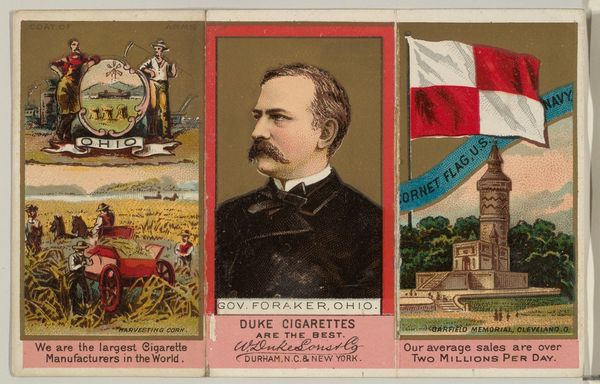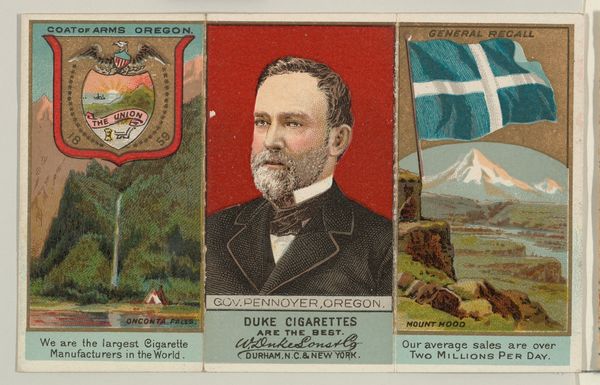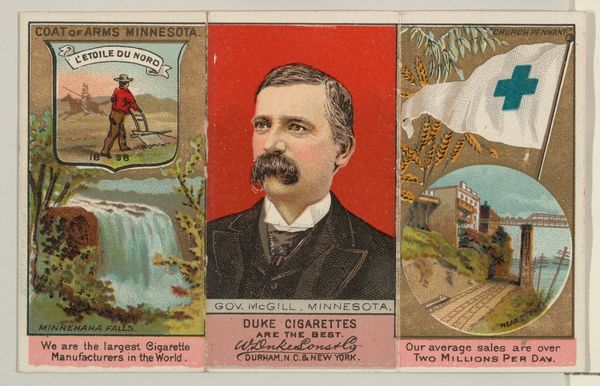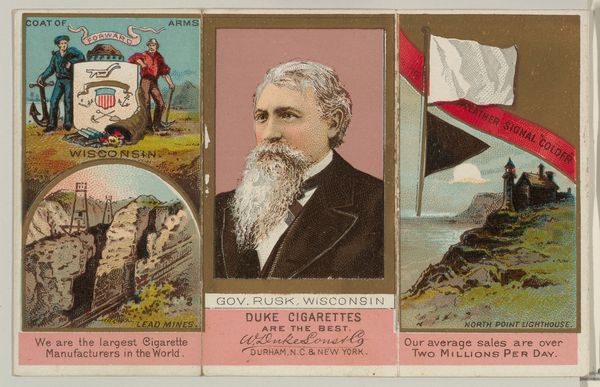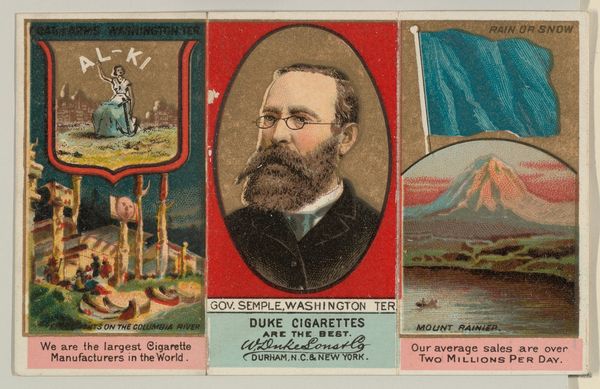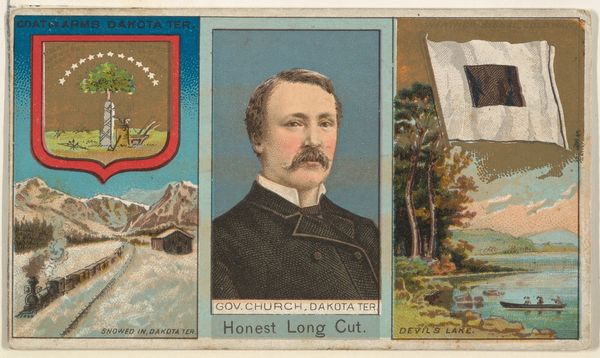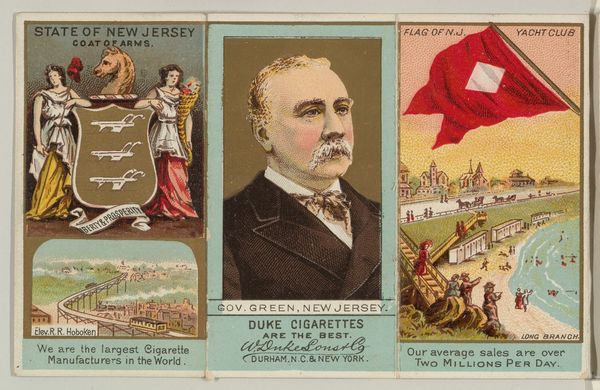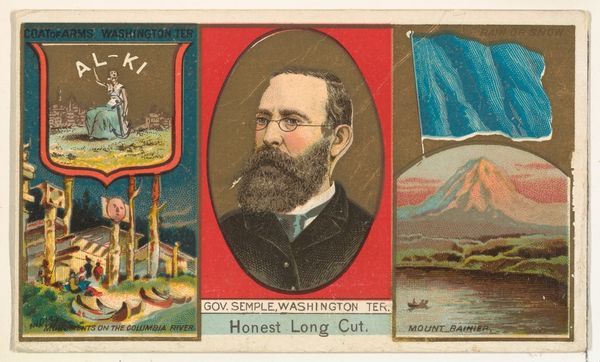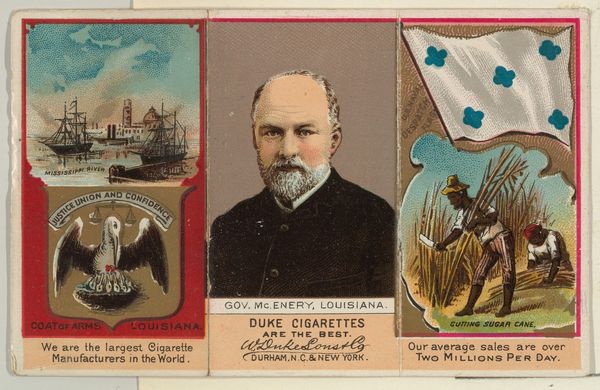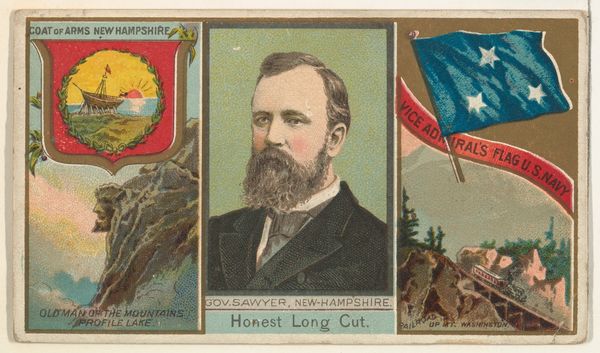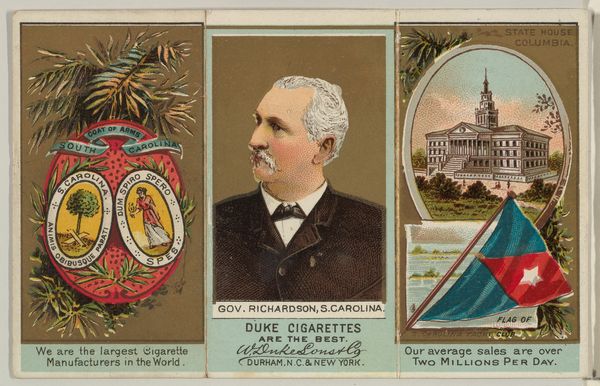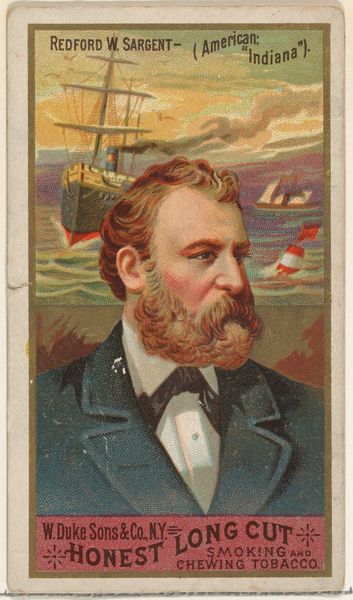
Governor Beaver, Pennsylvania, from "Governors, Arms, Etc." series (N133-2), issued by Duke Sons & Co. 1885 - 1892
0:00
0:00
drawing, lithograph, print
#
portrait
#
drawing
#
lithograph
# print
#
caricature
#
caricature
#
men
#
watercolour illustration
#
genre-painting
Dimensions: Sheet (unfolded): 2 3/4 × 4 5/16 in. (7 × 11 cm) Sheet (folded): 2 3/4 × 1 3/8 in. (7 × 3.5 cm)
Copyright: Public Domain
Curator: This lithograph, dating from approximately 1885 to 1892, comes from the "Governors, Arms, Etc." series issued by W. Duke Sons & Co., a prominent tobacco company. It depicts Governor Beaver of Pennsylvania. Editor: At first glance, it feels very much of its time, a blend of official portraiture and blatant advertising. The overall impression is of this layered, almost scrapbook-like visual rhetoric designed to both flatter and sell. Curator: Absolutely. These cards served a dual purpose: collectable items that simultaneously promoted the brand. Let’s examine how it portrays the Governor. On the central panel is Beaver's portrait. The other panels display Pennsylvania's symbols—the state's coat of arms with horses and a ship, the Independence Bell—juxtaposed against depictions of the “The Water Gap” and what's identified as “Penn’s Treaty with the Indians,” which also underscores notions of colonial history and expansion. Editor: The treaty scene on the right, for me, stands out uncomfortably. It seems like a sugarcoated, sanitized version of interactions between colonists and indigenous peoples, promoting a specific narrative of peaceful agreement that erases the violence and displacement that define colonization. The ad promises that ‘Duke Cigarettes are the Best’ in bold script under Beaver’s image, yet in so many ways this image reveals the cost of these manufactured products for a modern, industrial nation. Curator: Yes, we must read such images critically, noting whose stories they amplify and whose they marginalize. But, more broadly, the commercial element itself warrants consideration. It reminds us how deeply entwined commerce and politics have always been and how promotional materials actively shaped perceptions and, in this case, reinforced notions about leaders and state identity. The fact that they boast "Two Millions Per Day" in sales is an additional marker of industrial progress at a considerable, overlooked, human cost. Editor: I see this now as an active archive of this visual strategy, reflecting the brand-building process deeply implicated with representing histories of political rule. Considering such artworks allows us to consider issues like commercialization, and how consumer products embedded narratives of history. Curator: Indeed, looking closely, such popular prints shed light on the values, ambitions, and contradictions of late 19th-century American society, reminding us that even something as simple as a cigarette card is a carrier of culture and ideology.
Comments
No comments
Be the first to comment and join the conversation on the ultimate creative platform.
